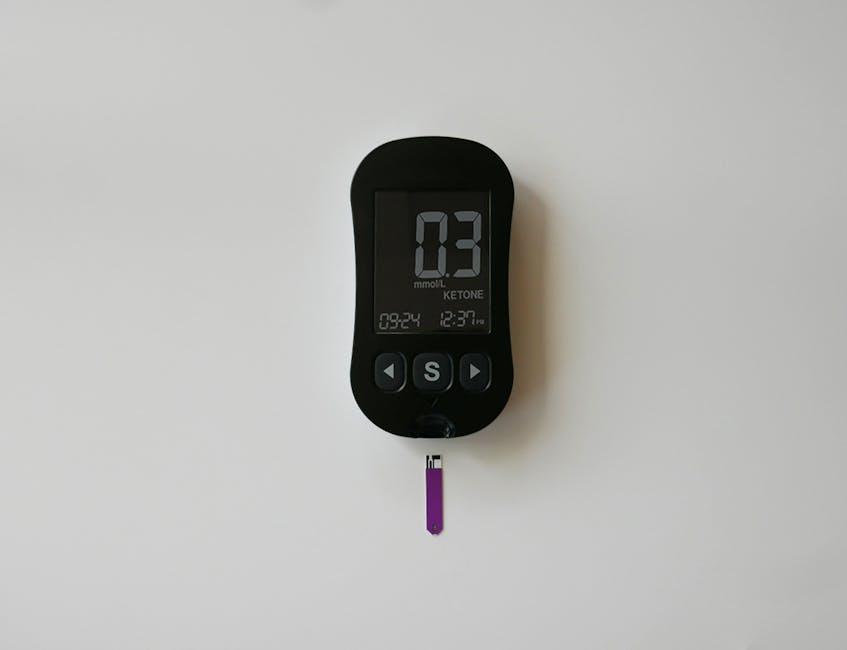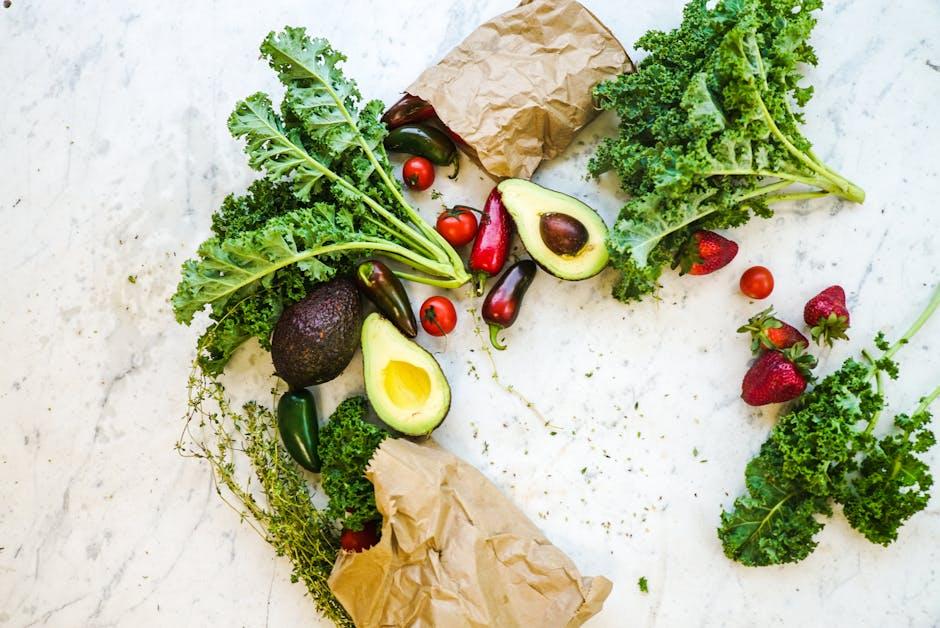Embarking on the keto journey can feel like unlocking a secret code to better health and weight management. The promise of lush fats, satisfying meals, and steady energy is undeniably enticing. But beneath the surface of this low-carb, high-fat lifestyle lies a maze of common pitfalls that can derail your progress and leave you frustrated. In this article, we’ll navigate the most frequent keto diet mistakes to avoid, helping you steer clear of the traps and keep your goals firmly in sight. Whether you’re a curious beginner or a seasoned enthusiast, understanding these missteps is key to unlocking the full potential of keto.
Common Carb Pitfalls That Sabotage Ketosis
When following a ketogenic diet, even small carbohydrate missteps can throw your metabolism out of balance. Many keto warriors underestimate the impact of hidden carbs lurking in seemingly “safe” foods like sauces, dressings, and processed nuts. These undercover carbs, often disguised as natural sugars or starches, may silently push you above the critical daily carb threshold. Keep a sharp eye on labels and always measure your portions precisely to avoid these stealthy saboteurs.
Watch out for:
- Low-fat or “diet” products that compensate flavor with added sugars
- Vegetables like carrots, beets, and onions in larger quantities
- Condiments containing maltodextrin or other carb-heavy fillers
- Unsuspecting snacks labeled “keto-friendly” but packed with starch
| Food Item | Hidden Carb Content (per serving) | Impact on Ketosis |
|---|---|---|
| Flavored Almonds | 4g | Medium |
| BBQ Sauce | 6g | High |
| Pickled Onions | 3g | Moderate |
| Light Yogurt | 7g | High |
Overlooking Electrolytes and Hydration Needs
When following a ketogenic lifestyle, dehydration and electrolyte imbalances are common pitfalls that can derail your progress and leave you feeling fatigued or unwell. This diet’s diuretic effect causes your body to flush out not only water but also essential minerals like sodium, potassium, and magnesium. These elements are crucial for muscle function, nerve signaling, and overall cellular health. Without paying attention to replenishing them, you might experience unpleasant symptoms such as headaches, dizziness, muscle cramps, or even heart palpitations.
To stay properly hydrated and maintain electrolyte balance, incorporate these key practices into your routine:
- Drink plenty of water: Aim for at least 8 glasses a day, adjusting based on activity level and climate.
- Include mineral-rich foods: Avocados, leafy greens, nuts, and seeds are excellent sources.
- Consider supplementation: Electrolyte powders or tablets designed for keto can fill nutritional gaps.
- Salt smartly: Using natural sea salt or Himalayan salt can enhance mineral intake without excess sodium.
| Electrolyte | Daily Keto Intake Suggestion | Common Symptoms if Low |
|---|---|---|
| Potassium | 3,500–4,700 mg | Muscle cramps, weakness |
| Magnesium | 310–420 mg | Fatigue, irritability |
| Sodium | 3,000–5,000 mg | Dizziness, headaches |
Ignoring Hidden Sugars in Everyday Foods
When starting a keto diet, many overlook the hidden sugars lurking in seemingly innocent foods. These sneaky carbs can quickly throw your macros off balance and stall your progress. Items like salad dressings, sauces, and even some flavored nuts often contain added sugars that aren’t immediately obvious. Always scrutinize labels and opt for products labeled “no added sugar” or “unsweetened.” Remember, even a small amount of hidden sugar can add up throughout the day and disrupt ketosis.
To help you navigate this sugar minefield, here’s a quick reference table highlighting common everyday foods and their typical hidden sugar content:
| Food Item | Hidden Sugar Content (per serving) | Keto-Friendly Alternative |
|---|---|---|
| Flavored Yogurt | 12–15g | Plain Greek Yogurt + Stevia |
| Barbecue Sauce | 8–10g | Sugar-Free BBQ Sauce |
| Granola Bars | 10–20g | Nut & Seed Bars (No Sugar) |
| Canned Soup | 5–7g | Homemade Broth-based Soup |
Being vigilant about hidden sugars not only helps maintain ketosis but also promotes a cleaner, more nutrient-dense keto experience. Keep your eyes open, and don’t hesitate to swap products for truly low-carb, wholesome options.
Misinterpreting Fat Intake for Weight Loss
Many newcomers to the keto lifestyle fall into the trap of assuming that all fats are created equal and that consuming them endlessly will automatically lead to weight loss. It’s crucial to understand that quality and quantity matter just as much as the type of fat. Overloading your diet with processed fats or excessive calorie intake, even from keto-friendly sources, can stall progress and may even lead to weight gain. Balancing healthy fats like avocados, olive oil, and nuts with your daily energy needs is key to achieving sustainable results.
Moreover, some fats have different metabolic effects. For example, medium-chain triglycerides (MCTs) found in coconut oil can provide quick energy and support ketosis, but relying solely on them without incorporating whole foods can backfire. Keep in mind the importance of monitoring your fat intake in conjunction with your protein and carb levels to maintain that delicate metabolic balance.
| Fat Type | Source | Benefit | Use Tip |
|---|---|---|---|
| Saturated Fat | Butter, Coconut Oil | Supports Ketosis | Use in moderation |
| Monounsaturated Fat | Avocado, Olive Oil | Heart-Healthy | Great for dressings and cooking |
| Polyunsaturated Fat | Fatty Fish, Walnuts | Omega-3 Rich | Include regularly |
| Trans Fat | Processed Foods | Harmful | Avoid completely |
Neglecting the Importance of Balanced Micronutrients
When following a keto diet, it’s easy to get wrapped up in counting fats and proteins while overlooking the vital role of micronutrients like vitamins and minerals. This oversight can lead to deficiencies that trigger fatigue, muscle cramps, headaches, or even immune system issues. Ensuring a diet rich in diverse vegetables, nuts, and seeds is crucial to maintain the delicate balance your body craves during ketosis. Remember, keto is not just about restricting carbs but fueling your body with quality nutrients to thrive.
To keep your micronutrient intake on track, focus on incorporating foods packed with key elements such as magnesium, potassium, calcium, and B vitamins. Supplementing can help, but whole foods always win for bioavailability. Including these can prevent the common “keto flu” symptoms and support overall well-being. Consider this quick guide for essential micronutrients on keto:
| Micronutrient | Benefits | Common Sources |
|---|---|---|
| Magnesium | Muscle function & energy production | Almonds, spinach, pumpkin seeds |
| Potassium | Electrolyte balance & heart health | Avocado, salmon, leafy greens |
| Calcium | Bone strength & nerve signaling | Cheese, broccoli, sardines |
| B Vitamins | Metabolism & nervous system support | Eggs, liver, cauliflower |
Q&A
Q&A: Keto Diet Mistakes to Avoid
Q1: What is the most common mistake people make when starting a keto diet?
A1: Jumping in too quickly without properly understanding macronutrient ratios often leads to what’s called the “keto flu.” Newcomers may drastically cut carbs without ensuring enough fat intake, causing fatigue, headaches, and irritability. Gradually easing into ketosis and tracking macros can help avoid this pitfall.
Q2: Can I eat unlimited amounts of fat on keto?
A2: Not exactly. While fat is your primary fuel source on keto, overeating fat can stall weight loss or cause digestive discomfort. Quality and quantity matter—focus on healthy fats like avocados, nuts, and olive oil, and listen to your body’s hunger cues.
Q3: Why is not tracking carbs a big mistake?
A3: Hidden carbs sneak into many foods—like sauces, dressings, and even processed meats—potentially knocking you out of ketosis without you realizing it. Meticulous carb tracking helps maintain the strict carb limit keto requires, typically below 20–50 grams per day.
Q4: Is it necessary to focus on electrolytes on a keto diet?
A4: Absolutely. As insulin levels drop on keto, your kidneys flush out more sodium, leading to electrolyte imbalances. Not replenishing minerals like sodium, potassium, and magnesium can cause cramps, dizziness, and fatigue. Drinking mineral-rich water and seasoning foods adequately is key.
Q5: Can I eat any type of protein on keto?
A5: Moderation is important. Excessive protein can convert to glucose via gluconeogenesis, potentially hindering ketosis. Choose moderate portions of high-quality proteins and balance them with sufficient fats.
Q6: Why is meal planning important on keto?
A6: Without planning, you may resort to convenient, carb-heavy options or fail to get enough nutrients, making the diet unsustainable. Preparing keto-friendly meals ahead of time helps maintain consistency and avoid slip-ups.
Q7: What role does fiber play on a ketogenic diet?
A7: Fiber is often overlooked but vital for digestive health and satiety. Focus on low-carb, high-fiber veggies like leafy greens, broccoli, and asparagus to keep digestion smooth without adding too many carbs.
Q8: Can cheating occasionally sabotage my keto goals?
A8: Even occasional high-carb indulgences can temporarily kick you out of ketosis, slowing progress or causing setbacks. If you do indulge, get back on track quickly and avoid turning cheats into a habit.
Q9: How important is hydration during keto?
A9: Extremely. Keto’s diuretic effect means you lose more water, increasing the risk of dehydration. Drinking plenty of water and balancing electrolytes helps maintain energy levels and overall health.
Q10: What’s the takeaway to avoid common keto mistakes?
A10: Educate yourself, plan meals, monitor macros, stay hydrated, prioritize electrolytes, and listen to your body. A thoughtful, balanced approach is the best way to enjoy keto’s benefits without unnecessary struggles.
In Retrospect
Navigating the keto journey can feel like exploring uncharted territory, but being mindful of common pitfalls will help keep your path clear and your progress steady. By avoiding these keto diet mistakes, you’re not just following a trend—you’re crafting a sustainable lifestyle tailored to your health and well-being. Remember, success on keto isn’t about perfection; it’s about learning, adjusting, and moving forward with intention. So, take this knowledge with you, stay curious, and let your keto adventure unfold with confidence.

